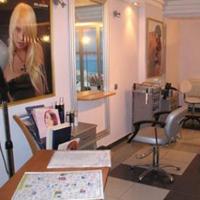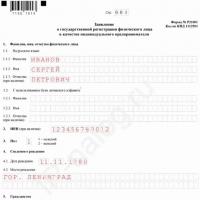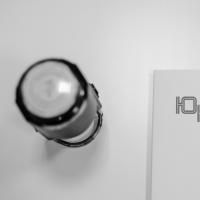Kotler conversion calculation. Sales conversion: What is it and why is it needed in business. For what purposes is it calculated in small, medium and large businesses?
Your business can perform better and make more money. You already know this. But! He can do this right now.
That is, with the initial data that we have now. All you need is to increase your sales conversion. What it is and how to get the most out of it, we’ll look at it in this article without cats or complicated words.
It is sales conversion and its increase that influences more buyers to turn from potential to real.
This indicator is included in the TOP 5 required for calculation. And how to do this in a store, sales office, showroom or even an online store, read on.
Oh those concepts
Since I don’t really like theory, I propose to call it a day. The only thing I want to talk about is that there are currently many types of conversions.
However, I will highlight three main types, which are the most common, and which any businessman must know as a prayer:
- Conversion in advertising. This is the ratio of the number of hits/clicks on an advertisement to the impressions of that advertising message.
- Offline conversion. This is the ratio of the number of buyers to the number of people who entered the shopping area.
- Conversion on the site. This is the ratio of people who performed the target action on the site to the number of all visitors.
Based on this, we can draw the main conclusion. If your company uses several platforms (store, online store and office), then there will be several sales conversions and the data on them will vary.
Also, how will conversion differ by product, target audience, region, etc. But first, start counting the minimal and simple actions, and only then go deeper.
Important addition. In business, when we talk about conversion, we usually talk about it as part of the sales funnel. Therefore, be sure to study our article. Believe me, all this together will change the way you look at your business.
We count and forget
In our materials we constantly repeat that business is, first of all, numbers, not feelings.
There is a small part of luck, but everything else is based on very real facts. And the more indicators you own, the easier it is to manage, control and develop it.
For example, how well target clients come to your advertising company or how well your salespeople work.
But! I’ll be honest with you, conversion rate is not the main metric in marketing. He is important, but not the main one.
The most important thing is profit. And if every second person buys from you, but the average check is three kopecks, then there is no point in calculating the conversion in this case.
Therefore, as I already said, it is imperative to calculate sales conversion, so you will see a lot of useful information. But conversion can be deceiving.
Always check the purity of the analysis with such additional indicators as: transaction length, net profit.
THE CLEAREST Formula
Therefore, there is no ideal conversion rate in the market. Everyone will have their own. And to determine it, you take the first metrics from your business in a month, after which you make it a minimum plan and look for ways to develop.
Introduce innovations and then look at the results. If everything goes up, then you have a new minimum bar. And so on in a cycle.
Enhancement Methods
Lately, we’ve received a lot of people thanking us for saying that our articles contain a lot of useful information thanks to practical information that people can take and apply here and now.
By tradition, this article will not be an exception. And I will give some universal tips for all types of contacts. They will not cover the topic fully, but will be a nice addition.
- Count the number of people. Both those who came in and those who bought. Do this daily. This can be done manually or using special systems and services.
For complete beginners, you can use an online table in Google.Docs, which your fighters will maintain and you will see and check daily.
- Simplify your sales. Make navigation, good, selling price tags and. For some this will sound banal and perhaps even mockery, but most businesses still don’t have this.
- Simplify your purchase. Add the option to purchase using a card, credit or installment plan. This will be especially true if it is an installment plan from a store.
For example, one of our clients introduced a similar installment plan for 4 months. The results exceeded all expectations. Non-refundability barely exceeds 10%, but the sales conversion rate (especially for expensive products) has increased by 20%.
- Organize a competition. If you have 2-3 shifts or 2-3 sales managers, then organize a competition between them for the highest conversion.
The point of the competition is that whoever has the highest conversion rate over a certain period of time will receive a prize.
The only thing is to make sure that there is no collusion between these comrades, otherwise your whole idea will go to waste. More details in our article “”.
- Add more contacts. You must have not only a telephone number for the region in which the office/warehouse is located, but also a free 8-800 number and email.
You want to make this journey as easy as possible at every step. For example, on a website, remove a huge number of fields in the application form or make a call to your company without unnecessary actions with an answering machine.
- Implement sales scripts. Sales conversion in staff work is easily increased by training in effective communication with customers.
But you most likely don’t have this. But in vain. When an employee works according to the structure of an ideal salesperson, conversion increases.
Briefly about the main thing
When we talk about a new blog article, we spend quite a long time choosing what exactly to write. In the case of sales conversion, we didn’t think long about it.
It is necessary to count the conversion. Without any conversations, objections, etc. No matter what the staff says, no matter how much you hate this innovation, implement, monitor and constantly work to increase sales conversion.
But remember the text you read above, namely the section “conversion can be deceiving.”
This indicator is amazing and if you haven’t calculated anything before, you will be surprised by the results. And if you already think, then quickly go deeper and see this indicator in the context of people, products, advertising channels, time, place, etc.
Warning: longread, multiple letters.
Conversion rate reflects your retail business's ability to handle incoming traffic. “According to the mind,” it is calculated as the share of buyers in the total number of visitors. But most companies simply divide the number of checks per day by the number of visitors per day according to counter indicators, which, in fact, is not true. Therefore, before thinking about increasing conversion, I suggest first correctly calculating this indicator. And then you can think about ways to increase it. So how can you increase your conversion?
Method 1. More receipts – higher conversion
The first method is fraudulent, breaking checks. You can do nothing, but instead of processing 3 purchased goods with one receipt, enter each of them separately, and the conversion will “increase”. This can happen either due to the malicious intent of the staff or at the initiative of management. Often, under the terms of a promotion, checks are forced to be broken, for example, when accounting asks for “promotional” goods to be stamped with a separate check. Naturally, this method of increasing conversion is completely unprofitable for the company and is “compensated” by a decrease in the “average bill”. Therefore, it is worth making sure that checks are never broken.
Method 2. Cut off unnecessary visitors
Method 3. Introduce a motivation system based on “personal selling”
Transfer staff to “personal sales”. No matter how much they say that team sales provide a higher level of service, that the client is served by several shift workers at once, no matter how much they warn about the negative consequences in the form of competition between sellers and a tense atmosphere in the team, I still believe that personal sales As a result, they give better conversion. Of course, provided that you can manage the team in the right way. In my practice, there was an example of an increase in conversion from 5 to 11% when changing motivation from collective to personal. True, at the same time it was necessary to replace almost the entire original composition of salespeople, who responded extremely poorly to the change in the motivation system. But, as you can see, it was economically justified.
Method 4. Low price strategy – every day Arrange “Everyday low prices”.

This pricing strategy, first tested in supermarkets in the United States, allows customers to increase their desire to buy something by focusing on the best deals. It consists of displaying products with a very attractive price in the most visible place. You can see it in action, for example, in stores, New Yorker or H&M. The very first sweatshirt on the hanger is at a ridiculous price of 599 rubles (the rest, however, are already 2 times more expensive). This creates the illusion of very affordable prices for the buyer and removes the psychological barrier that prevents them from spending money.
Method 5. - Entry products
Placement in the focal zone (“market zone”) of so-called “entry products” - inexpensive “little things” that do not require major expenses and stimulate spontaneous purchases. For example, a luxury brand has designer phone cases for 39 euros in its focal area and this offer attracts many buyers who are not ready to spend more significant amounts of money right now. If the boutique administration had placed bags for 3,999 euros in the same area, it would have cut off spontaneous purchases and the conversion would have been much lower.
Method 6. – “Active” sales
Get “Active Sales” from sellers. The idea of active sales is for sales consultants to independently offer their services to buyers, without waiting for them to ask for it. Despite the fact that many buyers really don’t like it when sellers impose themselves and “don’t give them a pass,” it is a proven fact that active sales increase conversion. Here I propose to implement the minimum, which, however, is difficult to achieve for most companies. Make sure that your salespeople, after waiting the required 3-minute pause, come up and talk to the buyer on their own. This seems quite easy, but is actually not that easy to implement. You will need either regular mystery shopping (mystery shopping research) or the implementation of video surveillance systems and recording analysis. It’s good when sellers, after starting a dialogue with a buyer, know how to continue it, but this is a topic for a separate article.
Method 7. – The product sells itself
Merchandising. If sellers fail, merchandising is a reliable safety net. Many large format stores do not rely on the professionalism of their consultants (their number is simply not enough for a huge area) and place attractive POS (Point of Sales) materials and are very attentive to the placement of goods. If your sales floor contains bright and noticeable: promotional price tags, “hot offer” zones, thematic compositions and groups of mannequins, attractive sets on tables in the entrance or checkout area, then all this will imperceptibly add up to a higher conversion rate.
Method 8. - Psychological pricing.
Take care to correctly format price tags. Firstly, use correct rounding: 3950 rubles is perceived better than 4050 rubles with a negligible difference in the markup. When applying for discounts, always follow the rule, indicate: “starting price, % discount, final price.” If the % discount is small, then stick to the “starting price, final price” scheme or use the additional “special price” label.
Method 9. – Hold promotions and sales more often

Promotions and sales. Most promotions involve time-limited discounts. And there are several techniques that can significantly increase conversion during their implementation. The first way is to fuel the “urgency” effect: buyers must be sure that the offer will end soon, and they need to buy here and now. Second: to create a stir; for this purpose, merchandising techniques are used that introduce slight chaos into the presentation of the product, and some stores even hire “fake” buyers who create queues and crowds. If successful, buyers will buy up even the most stale and seemingly useless inventory leftovers. By the way, an increase in conversion or a lack of positive dynamics is a clear indication of whether your promotion worked or not. Good promotions and sales should increase conversion by 30-40%.
Method 10. Keep track of inventory.
Sort items into stores more often, and “transfer” items between stores. It’s strange to expect an increase in conversion if the size charts are “broken” and the most popular items are sold out. A common situation: conversion failure on Sunday, after successful Saturday sales. All office employees are resting, the goods will be sorted by Monday evening at best. And instead of having a good trade on the second day off, the store greets visitors with empty shelves. Deliver seasonal goods in advance, do not allow a situation where the frost hits, everyone runs to warm up, and your store will receive knitwear and outerwear in 2 weeks.
Method 11. Create a comfortable atmosphere.

Keep the customer in the store. There are many studies that find a correlation between time spent in a store and the likelihood of purchasing - the longer a customer spends on the sales floor, the more likely he is to buy something. But how can we stop him? Provide a comfortable atmosphere. Everything is important here from proper lighting to ventilation, pleasant smells, background music, friendliness of employees, security guards, product placement, etc. Something as trivial as an unpleasant odor or stuffiness in the summer can cause visitors to leave your store faster, ruining any hopes of increasing conversions. The technology of analyzing touch points (“Points of Contact”) with the buyer helps to track all irritating factors.
Method 12. Hone your purchases
Buy what the visitor requires. This is of course easier said than done, but in fact, proper purchasing is the main factor in ensuring high conversion and, ultimately, the success of your retail business. To understand the tastes and preferences of your customers, pay attention to analyzing your customer base. The “Customer Profiling” technique and analysis of unmet demand will come to the rescue. Keep a formal record of requests from customers that your stores could not satisfy, make it the duty of buyers to respond to them (note, of course, you should not try to purchase everything that is asked). - conduct interviews with buyers. Buyers must, from time to time, interact with customers directly on the sales floor or during special events.
Afterword
In conclusion, I would like to say a few words about the usefulness of monitoring the conversion rate. It is not necessary or important for all stores. The rule here is: the higher the store traffic, the more important it is to monitor conversion. If your boutique has 20-30 visitors a day, then forget about conversion and pay more attention to working with the client base and VIP service. If several thousand visitors come to your department store every day, then this indicator will be one of the most significant for you.
By default, the Currency Calculator makes calculations at the current exchange rate of the Central Bank of the Russian Federation (Central Bank of the Russian Federation) between US Dollars and Russian Rubles.
You can change the date of exchange rates by selecting any day you need. To change the date, click on the link on the date, an additional menu will open. The database contains information on all exchange rates officially established by the Central Bank of the Russian Federation since 1993. The date selection menu only shows those days on which exchange rates have been officially set. Fresh exchange rates are downloaded daily from the website of the Central Bank of the Russian Federation.
You can change the main currencies using the currency drop-down menu. It is convenient to change the main Currency by clicking on the line with the name of the currency in the lower table.
All calculations (cross-rate and totals) in the table on the "Calculator of all currencies" tab are performed automatically when the values of the main currencies change.
You can not only make calculations for currency conversion, but also view Currency Rates for the selected date on the “Currency Rates” tab of the table.
For ease of use, you can configure the Currency Calculator. Settings allow you to disable currencies you do not need, change the order in which currencies are displayed, and set default currencies for basic calculations. Use the Settings tab.
To assess how effectively a particular product or service is being sold, the seller must use quantitative assessment methods.
It is these methods that will best help you understand whether the sales process is well or poorly organized and what mistakes were made when organizing sales.
One of the most effective quantitative tools for assessing quality is conversion, which will be discussed in this article.
What it is?
Sales Conversion – ratio between the number of potential buyers(people or organizations who have read the proposal) and customers who made a purchase goods or services. The indicator is traditionally measured as a percentage, but for convenience you can use results expressed in ordinary fractions.
The value of the indicator shows how well the organization processes the processes of filling the Internet resource with interesting and meaningful content. It also demonstrates the effectiveness of the company's marketing department.
You can get more detailed information about this concept from the following video:
Why do you need a calculation?
Conversion calculation is a necessary measure when assessing the effectiveness of an organization. Many companies do not understand why the traffic on their resources or the number of store visitors is high (thousands of potential customers visit the product description page or point of sale), but only a few make actual orders and purchases.
In addition, managers do not understand the low effectiveness of marketing campaigns: many organizations invest a lot of money in advertising, but receive practically no return from it. Calculation of the indicator with mandatory subsequent analysis can give management staff food for thought and suggest ways to solve accumulated problems.
How to calculate the indicator correctly?
Conversion for any organization is calculated using the following formula:
K=N/N 0 * 100%, Where
- K – conversion rate;
- N – the number of real buyers (clients who bought a product or used a service);
- N 0 – number of visitors to the store or website.
As can be seen from the above formula, calculating the indicator is very simple, and the calculations require a very small amount of initial data.
 For example, for a company whose retail outlets and websites are visited by 10 thousand people a month, and real transactions for the purchase of goods are made by 100 visitors, the indicator will be equal to 1%.
For example, for a company whose retail outlets and websites are visited by 10 thousand people a month, and real transactions for the purchase of goods are made by 100 visitors, the indicator will be equal to 1%.
If the same organization, after carrying out all the necessary activities, manages to increase the number of clients by 2 times (while the total number of visitors does not change), then the conversion will already be 2%.
Value Analysis
If the conversion value turns out to be too low (and figures of 1-2% for online stores and 3-4% for regular retail outlets and organizations that have a lead generation form on their web resource are considered low), the company owner or its management should analyze the following:
- Lack of information for the client. The buyer always has a choice from which company to purchase a particular product or service, so he wants to have all the information about the product. If a potential customer does not stay long on the product description page or does not stand near the product of interest to him in the store for more than a few seconds, this most likely indicates the fact that he could not find the information he was interested in.
Filling this gap is very simple: you need to place videos and other visual materials on the website about the services provided or goods sold, as well as place selling texts that tell about all the advantages of the company over its competitors and push the buyer to make a choice. In retail outlets, this deficiency can be eliminated by placing brief information about the product on price tags, indicating the method by which more detailed information can be obtained. - Product failure to meet consumer expectations. Most customers go to competitors when they realize that the product offered to them does not have the characteristics that, in their opinion, are mandatory in this case. There is only one way to solve this problem: change the product package or the content of the service in such a way that they fully satisfy the needs of the entire target audience.
- Mistakes in the work of managers. Many buyers refuse to purchase even when the sale seems to have been completed. This usually happens due to miscalculations in the activities of managers: for example, if a client sent a completed form in the hope of buying a product as quickly as possible, and the manager responded to this only when the buyer’s ardor had already cooled down. The staff of a real retail outlet can also make mistakes: if the seller did not see that the client was interested in the product and did not approach him with the aim of telling him about all the advantages of the item and the benefits that he would receive from the transaction, he makes one of the most serious miscalculations in your profession.
To avoid such episodes in work, the company’s management must take care of regular training of its staff of managers and training them in the art of interacting with clients (this includes talking on the phone, correspondence via e-mail and many other types of communication).
How to increase the indicator?
To increase the percentage of website or store visitors who bring real profit to the company, it is recommended to take the following actions:
- If customers leave the order page without filling out the proposed form, it is necessary to work on the questionnaire or reduce prices.
- If a visitor who follows a link to a site spends less than two minutes studying the information offered or visits one or two sections, there are problems with navigation or design. The solution to the problem could be a redesign (changing colors and style) or changing the resource map.
- If a direct correlation is identified between the number of visitors quickly leaving the site and the key phrases by which they come to the resource, it is necessary to change the semantic core (the list of keywords used for promotion).
- If customers leave the site by clicking on contextual advertising or non-core links, you need to reduce their number. Contextual advertising can lead a potential client to a competitor’s website, and clicking on a non-core link will divert the visitor’s attention from the product or service.
- To increase your conversion rate, you need to work not only on your website or marketing strategy, but also think through and constantly improve the uniqueness of your offer, the price of the product or service, and the customer experience.
- The store should have easy navigation and a thoughtful arrangement of goods that customers come for most often.
- An offline retail outlet must have high-quality equipment (modern cash registers, devices that read the barcode of a product and instantly show its cost).
- The management of the outlet must take measures to reduce queues at the checkouts if they reach more than five people.
- To give the client the impression that he can buy everything he needs in this store, all shelves and display cases must be completely filled with goods.
Sales efficiency is one of the components of the well-being of an enterprise. Business owners, company directors and sales managers are interested in increasing the company's income and profit.
What are these indicators for?
To ensure profit growth, they direct their resources to control sales. It is important not only to create and debug the sales process, but also to constantly monitor how well certain goods and services are sold.
There are various factors behind successful sales;
- quality of goods/services;
- pricing policy;
- point of sale/website design;
- quality of service;
- professionalism of contact zone personnel;
- assortment and usefulness of the offer, as well as other indicators.
All these must be taken into account and controlled. You should analyze sales in a campaign based on specific numbers. To obtain these numbers, various methods are used to measure the effectiveness and efficiency of sales.
Conversion is one of the fundamental indicators of sales success
Using sales conversion, you can track the relationship between potential and actual customers. Real buyers are those visitors (of a store or online resource) whose visit resulted in a purchase. Potential customers are all those people who visited a company's website or retail outlet but did not make a purchase. They were all interested and could have purchased the product or service that the company was offering, but something prevented them from doing so.

Each visitor who does not make a purchase is a lost sales opportunity (income). Conversion allows you to track the number of missed opportunities and provides digital material for analyzing the reasons.
Conversion calculation is the basis for development and improvements
Focusing on an indicator such as sales conversion, the manager receives a kind of “feedback” from consumers. If out of a hundred visitors to a retail outlet or online store, only one made a purchase, this may indicate that 99 potential customers were dissatisfied with something. The manager has the opportunity to monitor the indicator, analyze its level and implement changes.
Thanks to conversion, you can evaluate the effectiveness of the company’s marketing policy as a whole and the effectiveness of each sales manager individually (if there are individual sales).
Conversion will allow you to track customer reactions to:
- marketing promotions;
- price changes;
- updating the assortment;
- increasing the professionalism of employees, etc.
By regularly using the tool, you can change your sales situation for the better and track these changes even within one working day.
Rules for calculating the indicator
To calculate conversion, you need to keep track of not only completed sales, but also track the number of potential transactions. For Internet resources, the number of site visitors is tracked. The call center takes into account the number of all unique incoming calls (for active telephone sales, the number of unique outgoing calls is also recorded). At a retail outlet, the number of visitors is recorded by special counters installed at the entrance, or using a questionnaire.

Conversion is determined as a percentage and is calculated using the following formula:
(number of actual buyers/number of potential buyers)* 100You can take almost any period for calculation: 1 day, 1 week, 1 month.
Conversion can be identified not only by overall sales in a company, but also by a specific product, service, promotion or special offer.
Activities to increase conversion
Increasing conversion is turning a company's potential income into real income. Calculating and tracking the indicator is the starting point for increasing sales. The result depends on how sensitively the manager reacts to the dynamics of the indicator and what steps he takes.
Since there are many factors that determine sales effectiveness, measures to increase conversion are also varied. It is important that actions are thoughtful, targeted and systematic.
For example, if a manager assumes that the reason for low conversion is the professionalism of the staff, then a comprehensive analysis should be carried out: are the staff sufficiently motivated, do the employees have the proper level of sales technology, do they have enough special knowledge of the product, is the available number of employees capable of processing the existing flow clients, etc. Based on the analysis, a decision is made to conduct training, revise motivation or expand staff.
Methods for improving indicators at a point of sale

Methods for increasing conversion in online stores
- The main page of the site should contain the basic information that the client needs: the entire range with photographs and prices, payment options, delivery terms, contact information;
- The site should be made convenient and intuitive;
- The product catalog must contain the entire range and be equipped with various filters so that the client can find the product he is interested in in a matter of seconds;
- An opportunity for the client to quickly and easily make a purchase and complete it in one click without a lengthy registration procedure in the system and specifying detailed information about himself. The simpler the procedure for ordering a product or service through the website, the higher the likelihood that the client will make a purchase;
- The website must contain information about the competitive advantages of the company (store). This will help motivate the client to place an order;
- When viewing the catalog and going to a particular product, the client should always be able to access information about payment and delivery without additional transitions to separate pages about delivery conditions and payment methods;
- When placing an order, the client should see a list of the goods he has selected, the cost of each product separately and the total amount of the order;
- Communication with company employees should not be difficult. The ideal option is the availability of all communication methods: telephone, toll-free number 8-800, various instant messengers (whatsapp, telegram, skype), online consultant, the ability to order a call back;
- Online store employees must be trained in sales technology. It is necessary that they have telephone conversation skills and know all the necessary information on the range of goods and services.
 They are the first to talk about Kokorin and Mamaev
They are the first to talk about Kokorin and Mamaev Steve Jobs biography, short biography, in Russian Article about Steve Jobs biography
Steve Jobs biography, short biography, in Russian Article about Steve Jobs biography Reorganization what is it: reorganized organization
Reorganization what is it: reorganized organization OKVED: hairdressing services Activity code hairdressing services
OKVED: hairdressing services Activity code hairdressing services OKVED: cleaning services
OKVED: cleaning services How much does it cost to open a sole proprietorship?
How much does it cost to open a sole proprietorship? How to rent an occupied premises for a bakery
How to rent an occupied premises for a bakery